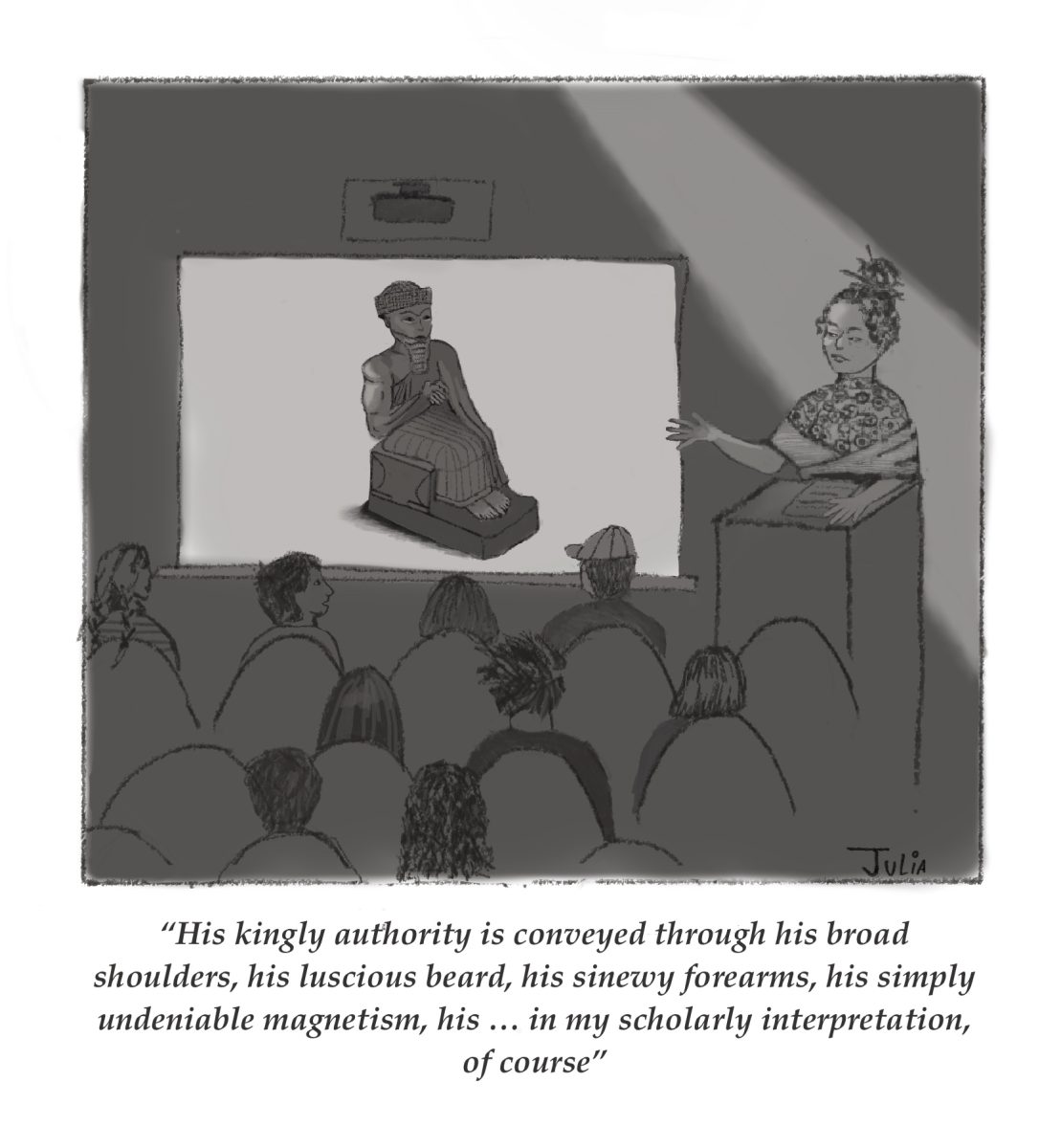At Williams’ bicentennial celebration in 1993, Professor Frederick Rudolph ’42 gave a speech in which he divided the history of the College into three eras. First came the Christian era, when students saw their education as part of a broader, Protestant mission. Then came the gentleman’s era, when Greek life dominated campus culture. Then came the consumerist era.
In his speech, Rudolph, a historian of higher education, described the consumerist era as an age of meritocratic competition — among both students and institutions. In the consumerist era, students compete to win admission, and then to extract the most from their four years on campus through extracurricular engagement and careerism. The College, meanwhile, competes with other schools to “woo the uncertain best and brightest,” and to capture tuition dollars.
The College did not enter its consumerist era by choice, Rudolph argued. Instead, “the changing nature of the economy turned the college degree into a passport to specialized graduate training.” Suburbanization and the rise of the middle class in the latter half of the twentieth century sent millions of students in search of bachelor’s degrees. Growing competition for admission led to growing exclusivity, which led to a growing need for Williams to justify its exclusivity. The result? An era defined by “elaborate recruiting campaigns” to attract more applicants, the proliferation of non-curricular services like career advising, and huge increases in the College’s budget so that the small fraction of accepted applicants could be lavished with the best amenities that money can buy.
Rudolph gave his speech more than three decades ago. He was remarkably perceptive — but he didn’t get everything right. Rudolph concluded his essay by looking to the future: “Now, as the College and the nation move inevitably, imperceptibly beyond the era of the collegiate consumer and the ethos of consumption, another era beckons.”
As it turns out, another era did not beckon. The College and the nation did not move beyond the era of the collegiate consumer. Instead, 32 years after Rudolph gave his speech, the College looks more like a big business than ever before. At the time when Rudolph was writing, the College’s operational budget was $44 million, the endowment was worth $421 million, and the admission rate was 30 percent. Now, more than three decades later, the operating budget is $303 million, the endowment is worth $3.65 billion, and the admission rate is 8.5 percent. The College hires both consultants and lobbyists and runs massive capital campaigns. Search up “identity.williams.edu” to get a taste of our distinctive brand identity.
Students, meanwhile, are essentially customers, and picky ones at that. Many of us choose our majors with careers in mind (which would have been rare among the fraternity aristocrats of the gentleman’s era, when merit was less important than family connections). We take pride in our U.S. News and World Report ranking. We expect our school to provide us with top-notch amenities beyond the classroom, like a center dedicated to community engagement, an office to help facilitate residential education, and a renovated $175 million art museum (back in Mark Hopkins’ day, students were expected to chop their own firewood).
But there are signs that the College’s consumerist era — for all the stress and success it has wrought — may soon be coming to an end.
First, the consumerist era has been characterized by several trends, which must, at some point, taper off. The last three decades have seen a precipitous drop in admission rates, but the College can’t get much more exclusive: We already turn 92 percent of applicants away. Grades have been rising for years, but now that 76 percent of scores are in the “A” range, they’re bumping up against their natural ceiling. Students have been steadily shifting away from the humanities for more than a decade, but humanities programs can’t shrink forever (we can’t have a negative number of Italian professors, after all).
Then there are the broader trends changing the face of higher education: the rise of AI, an impending “enrollment cliff” due to sharp declines in birthrates, a widening gender gap among college applicants, falling literacy scores for the nation’s youth. Institutions of higher education are “shaped by forces and expectations visited upon them by society,” Rudolph said in his speech. Well, the shape of society is changing. So will the College.
Perhaps the best way to tell if we are entering a new era is to look for crises: moments when colleges are forced to change or be changed. Historians looking back on the 2020s will have one crisis after another to choose from. The COVID-19 pandemic. The George Floyd protests. Widespread campus unrest in the wake of October 7th. The looming threat of federal funding cuts and endowment taxes, which could upend the College’s economic model.
It’s hard to say with confidence that we’ve reached the end of an era. We are still, clearly, in the thick of it — and clarity only emerges with hindsight. Rudolph did get it wrong in 1993, after all. Perhaps our current consumerist model is inescapable — the inevitable result of a digital age and a massive endowment, both of which appear to be here to stay.
But in my conversations with professors, administrators, and other students, many of us feel like the ground is moving under our feet. Since I arrived on campus in the summer of 2021, the attention of Hopkins Hall has been consumed by one crisis after another. In the meantime, all these long-term societal trends, many of which are functions of our consumerist era, have continued to chip away at the College as we understand it.
We may all look up from our desks, a handful of years from now, and find that the College has entered a new era, one defined in stark contrast to our present one.
What exactly will the next era of Williams look like? The future is hard to predict, but I can hazard a guess.
The College’s last three decades have been defined by expansion: of the student body, the administration, the endowment, the campus. Its next era, by contrast, will be defined by retrenchment and consolidation — the result of a public which is increasingly turning against higher education and high uncertainty regarding the College’s financial position. It will be an era in which the school consolidates its least popular academic offerings and struggles to balance the expenses demanded by the huge variety of amenities it offers. It will be an era in which the College still grows — but cautiously.
To be more optimistic, it may also be a more thoughtful era. In easy times, the College has had free rein to participate in the rat race of competition between elite schools: investing massively in life outside the seminar room. In hard times, the College may have to focus on a far more limited set of priorities.
David Wignall ’25 is an economics and history major from San Francisco, Calif. He is an executive editor-at-large at the Record.




